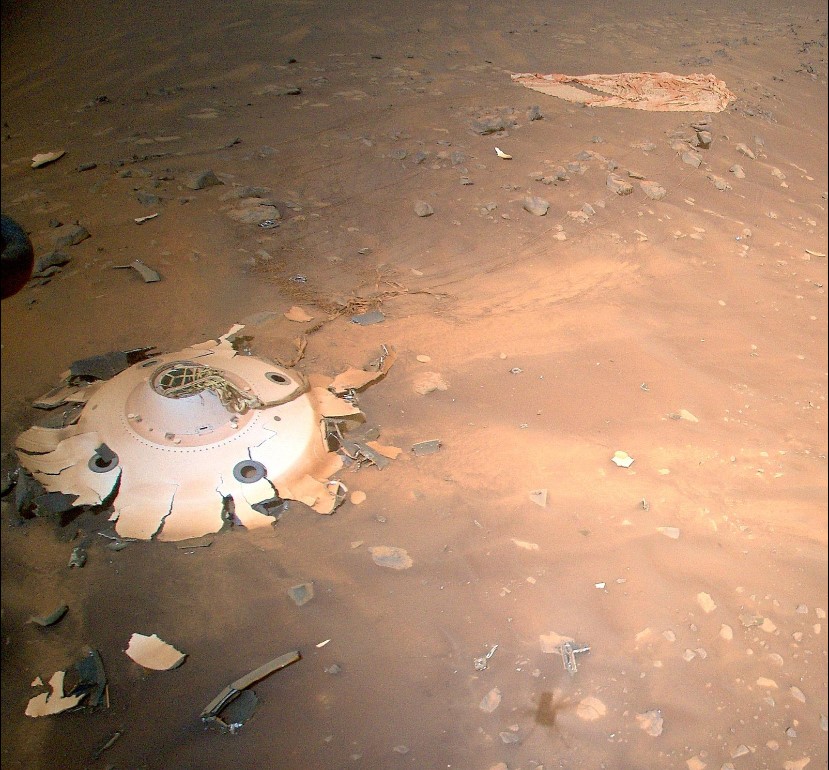Humans have managed to leave litter on Mars despite never stepping foot on the planet.

NASA’s Perseverance Mars Rover spotted an unexpected piece of trash on the red planet, a shiny object wedged between two pieces of rock, according to a report from the space agency Wednesday.
In a series of posts to Twitter, the Perseverance team shared that they’d spotted what is believed to be a piece of thermal blanket that was used to protect the rover from extreme temperatures during its landing.
“It’s a surprise finding this here: My descent stage crashed about 2 km away. Did this piece land here after that, or was it blown here by the wind?” read a follow-up post.
The rover has been on a mission since it landed on Mars in February 2021, exploring the planet’s Jezero crater for signs of life.

Get daily National news
It’s not the first time human space junk has been spotted on the surface of Mars, however. In April, the Ingenuity helicopter captured an aerial view of the landing gear that was left behind when the Perseverance made landing, reports Business Insider.
Mars rovers have been on a bit of a roll lately, returning images of unusual and intriguing Martian terrain for scientists to ponder over.
On Sunday, June 12, the Perseverance rover returned images of a rock formation that looked very similar to a snake’s head, as well as a precarious rock formation that showed a boulder perched on top of a rock slab.
And last month, the Curiosity Rover shared photos of what appeared to be a doorway nestled inside a rock face, which sent wannabe astronomers into a frenzy about what could lie behind the perfectly formed gap.
However, NASA officials and a Mars expert at Harvard University said the curious formation is nothing more than a narrow, naturally occurring crevice in the rocky, barren terrain.
Andrew Good, a spokesman for NASA’s Jet Propulsion Laboratory in California, told The Associated Press that the image being circulated is a “very, very, very zoomed-in shot” of a naturally formed rock crevice.
In fact, Good said NASA scientists overseeing the rover estimate the opening is only about 30 centimetres tall and 40 centimetres wide, or roughly the size of a medium dog door.
— with files from The Associated Press










Comments